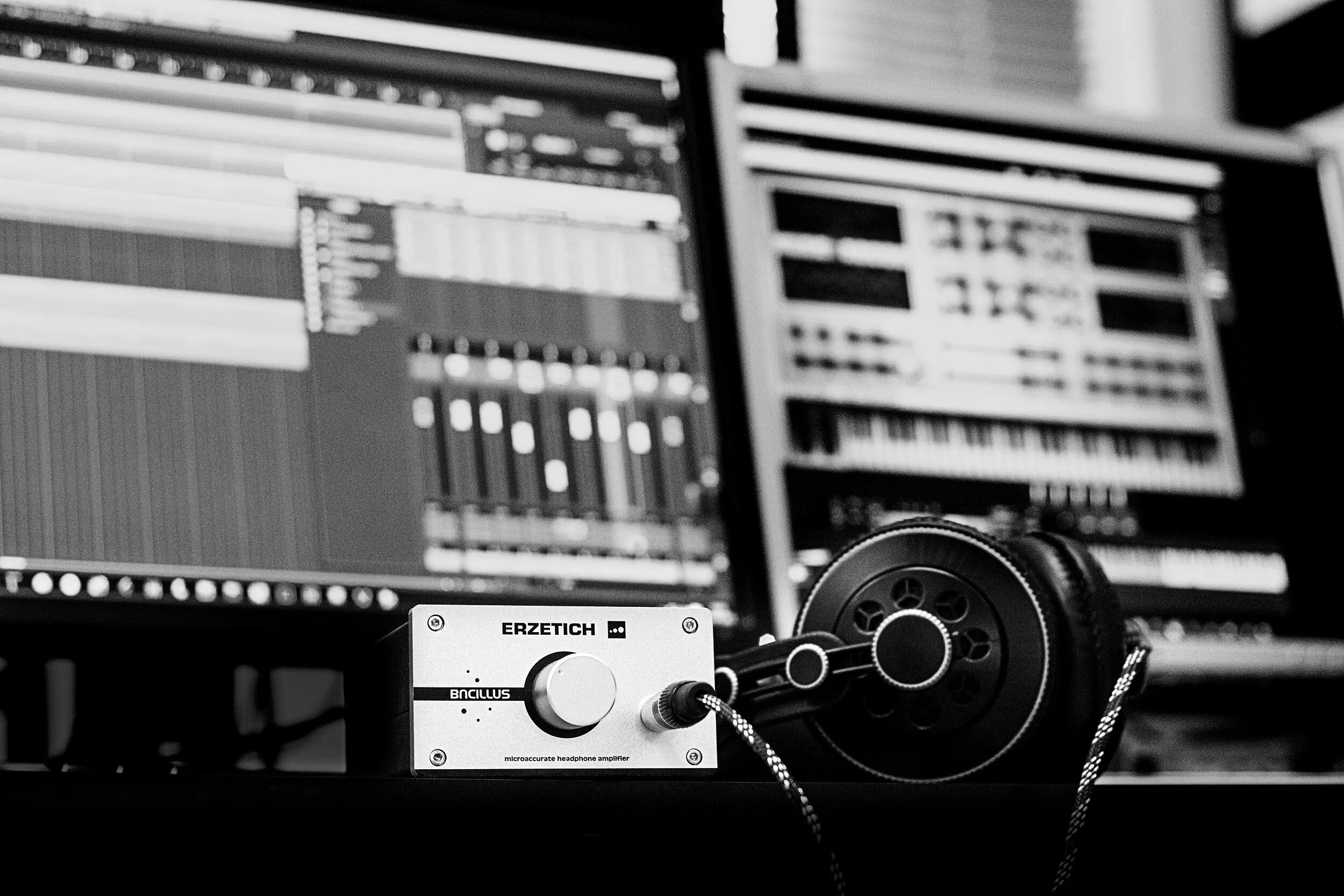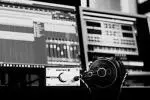When you hear “32-Bit” or “32 Bit” or “32Bit”, it references a digital architecture where each data unit comprises 32 binary digits.
This architecture is notable for its ability to represent a broad dynamic range and is instrumental in reducing distortion in fields like digital audio.

What is 32-Bit: Table of Contents
We’ve all been there, surrounded by the intricate jargon of a new field we’re trying to navigate. And if you’ve ever delved into the world of music production, chances are you’ve come across the term “32-Bit. This seemingly cryptic phrase is tossed around in conversations about digital audio workstations, DSP chips, and sound quality, but what does it really mean?
In essence, “32-Bit” isn’t some secret language exclusive to tech-savvy wizards. Instead, it’s a fairly straightforward concept with far-reaching implications, especially in the realm of music production. At its core, “32-Bit” relates to the way digital systems, like your computer or audio processing hardware, handle and process information.
Imagine, if you will, a set of microscopic switches, each of which can be either on or off. Now, picture a group of 32 of these switches working together as a team. That’s what “32-Bit” is – a group of 32 ‘bits’ or binary digits. The beauty of this system lies in the sheer number of combinations these 32 switches can make. We’re talking over four billion possibilities. This expansive number allows your computer to manage a huge amount of information in a way that’s both efficient and detailed.
Now, you might be thinking, “Okay, that’s all well and good, but what does this have to do with music?” Here’s where things get interesting. In music production, this precision and detail directly influence the sound quality. Whether you’re an aspiring musician tweaking your first track or an experienced audio engineer mixing a professional album, the impact of a 32-Bit system can be monumental.
But let’s not get ahead of ourselves. As we dive deeper into this topic, we’ll uncover the layers of complexity and beauty that 32-Bit brings to the music production process. So grab your headphones, turn up the volume, and join us on this fascinating journey. Let’s explore the world of 32-Bit!
What Does 32-Bit Mean in Digital Architecture?
To fully appreciate the relevance of ’32-Bit’ in music production, we must first take a slight detour into the realm of digital architecture. The bedrock of any digital system, be it a high-speed computer or a humble calculator, is based on the concept of ‘bits’ and binary systems.
In essence, a ‘bit’, which is a portmanteau of ‘binary digit’, is the fundamental unit of data in computing and digital communications. The binary system, where data is represented using two states – typically denoted as 0 and 1 – hinges on the humble bit.
Now, let’s return to the term at hand – ’32-Bit’. The ’32’ here refers to the number of bits involved in handling a chunk of data. In other words, a 32-Bit system processes information in groups of 32 bits. Imagine it like a super-efficient assembly line in a factory, where 32 workers (bits) team up to handle each product (data).
Why 32, though? What’s so special about this number? In the digital world, it’s all about the possible combinations. With 32 bits, we have over four billion distinct combinations, allowing for a vast range of data representation. This breadth and depth of data handling offer an incredible level of precision in various tasks, especially audio processing.
Why is 32-Bit Important in Digital Audio Processing?
Imagine listening to your favorite track. The crescendo of the violins, the hauntingly beautiful vocals, the powerful punch of the bass – they all combine to create a rich, multi-layered audio experience. How can you capture this complexity in a digital format? Enter 32-Bit.
The impressive dynamic range of a 32-Bit system enables it to represent the softest whispers to the loudest roars with ease, preserving the integrity of the original sound. This breadth is vital in digital audio processing, as it allows for the capture and reproduction of sound in its full glory, with all its nuances and subtleties intact.
Moreover, a 32-Bit system is instrumental in reducing distortion. By utilizing the vast space provided by the four billion potential values, the system can ensure that even the peak audio signals do not exceed the limit, avoiding digital clipping and subsequent distortion.
How Does 32-Bit Impact the Quality of Audio Production?
Music is all about the details. The slight tremble in the vocalist’s voice, the subtle undertones of the cello, the gentle tap on the cymbals – these tiny details add depth and dimension to the music. A 32-Bit system, with its precision and dynamic range, can capture these details in a way that few other systems can.
Additionally, a 32-Bit system can offer immense headroom during the music production process. Headroom, in audio parlance, refers to the safe zone between the typical operating level and the maximum level before distortion occurs. The expansive dynamic range of a 32-Bit system means you have plenty of headroom to play with, making it easier to handle loud signals or peaks without the risk of clipping.
In essence, a 32-Bit system provides the tools to capture, process, and reproduce audio in a way that preserves its richness, detail, and vibrancy. It’s a little like having a high-definition lens for your ears! The difference it brings to the quality of audio production is nothing short of profound.
What is the Role of 32-Bit in DSP Chips and Memory Addresses?
Let’s dive deeper into the intricate world of audio processing hardware. Central to many of these devices are Digital Signal Processors (DSP) chips, which are responsible for real-time processing of digital signals like audio. Think of these chips as the workers meticulously fine-tuning the sound that ends up hitting your ears. 32-Bit DSP chips are particularly skilled in this task. Their capacity to handle vast amounts of data at a time allows them to process sound signals with high precision and speed.
But the prowess of 32-Bit extends beyond DSP chips. It also plays a significant role in memory addressing in audio applications. Each bit in a 32-Bit system can reference a unique memory address, enabling it to access a large amount of data simultaneously. This broad memory access capacity is essential for handling complex audio tasks efficiently, ensuring your music production software runs smoothly even when juggling numerous tracks or effects.
What is 32-Bit Floating Point Processing?
To fully understand the impact of 32-Bit in music production, we need to acquaint ourselves with another concept: floating-point processing. This method is like a digital version of scientific notation, where numbers are represented as a product of two parts: a fraction (the mantissa) and an exponent. This structure allows for the representation of both incredibly large and very small numbers, granting remarkable flexibility.
32-Bit floating-point processing adopts this methodology, using the 32 bits to encode the numbers in this format. The benefits? Well, it significantly broadens the dynamic range, allowing audio software to handle extremely high or low signal levels without distortion or noise. It’s like expanding the canvas on which you can paint your music, allowing for even more creativity and detail.
How Does 32-Bit Impact Post-production and Mixing?
Post-production and mixing stages are where the magic truly happens in music production. They are akin to a master chef adding the final touches to a gourmet dish, and just like the chef’s expert hand, precision is key.
With its extraordinary precision and vast dynamic range, a 32-Bit system can significantly enhance these stages. It allows for more exact adjustments and manipulations, ensuring that the final output is as close as possible to your artistic vision. Whether it’s adding a touch of reverb to a vocal track or adjusting the stereo spread of a guitar part, the power of 32-Bit can help you do it all without losing the tiniest nuance.
The wide headroom that 32-Bit offers also proves invaluable during mixing. It allows for effective management of loudness levels, preventing clipping while maintaining the impact and integrity of the music. Essentially, 32-Bit becomes your ally in the quest for the perfect mix, giving you the tools to explore, experiment, and excel in your musical endeavors.
Exploring Real-world Applications of 32-Bit in Music Production
The power of 32-Bit is not confined to theoretical discussions; it thrives in practical applications, especially in music production. Let’s explore a few real-world scenarios where 32-Bit processing can make a considerable difference.
Consider the process of recording a live orchestra. Capturing the breadth and depth of an orchestra’s sound is a complex task, as the audio signals’ amplitude can vary dramatically from the soft rustling of a violin bow to the booming crash of the percussion section. With the expansive dynamic range of a 32-Bit system, these extreme variations can be captured with fidelity, preserving the live performance’s intricate nuances. The difference is akin to the transition from a grainy black-and-white picture to a vibrant high-definition photograph.
Or take the example of multi-track mixing. Producers often work with numerous tracks layered together, each with different levels. Managing these levels can be a precarious task, with the risk of the louder tracks causing distortion. A 32-Bit system, with its increased headroom, provides a larger safety net, reducing the risk of clipping and maintaining the clarity of each track, even when they’re all playing together.
Another scenario is the use of digital plugins. Musicians today have access to an array of plugins that can simulate anything from iconic guitar amplifiers to vintage synthesizers. These plugins often manipulate the audio signals in complex ways, which can lead to increased levels or unexpected peaks. Again, the 32-Bit system shines here. It can handle these fluctuations without a hitch, ensuring that your carefully chosen plugins enhance the music without causing unwanted distortion.
From the first note recorded to the final track mixed, the influence of 32-Bit processing can be felt throughout the music production process. Its ability to capture, handle, and reproduce complex audio signals with accuracy makes it an essential tool in the arsenal of every musician, producer, and sound engineer.

